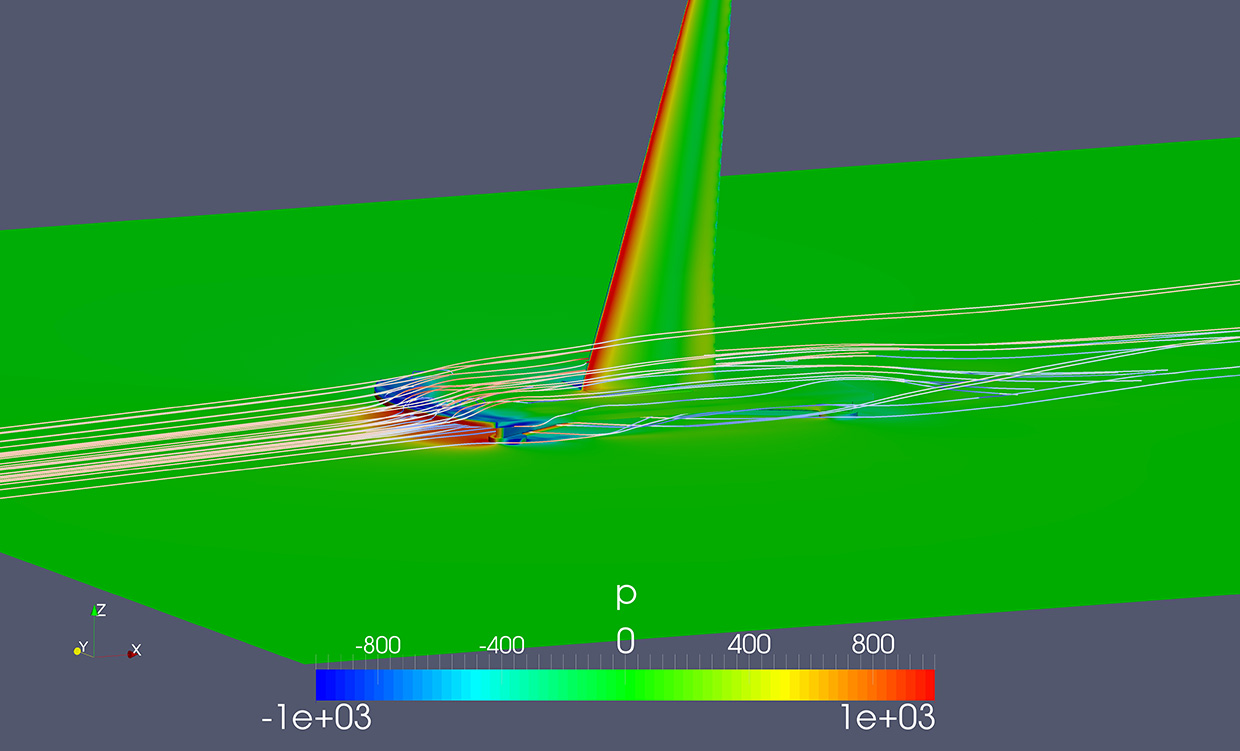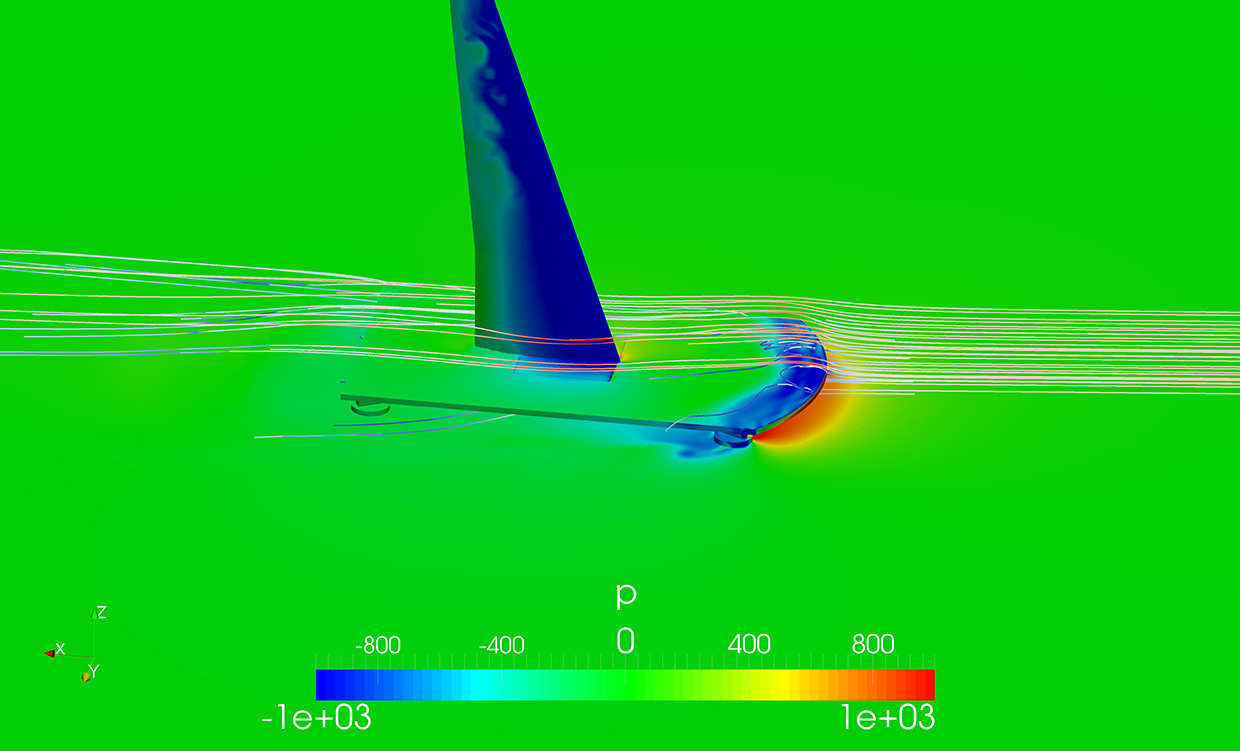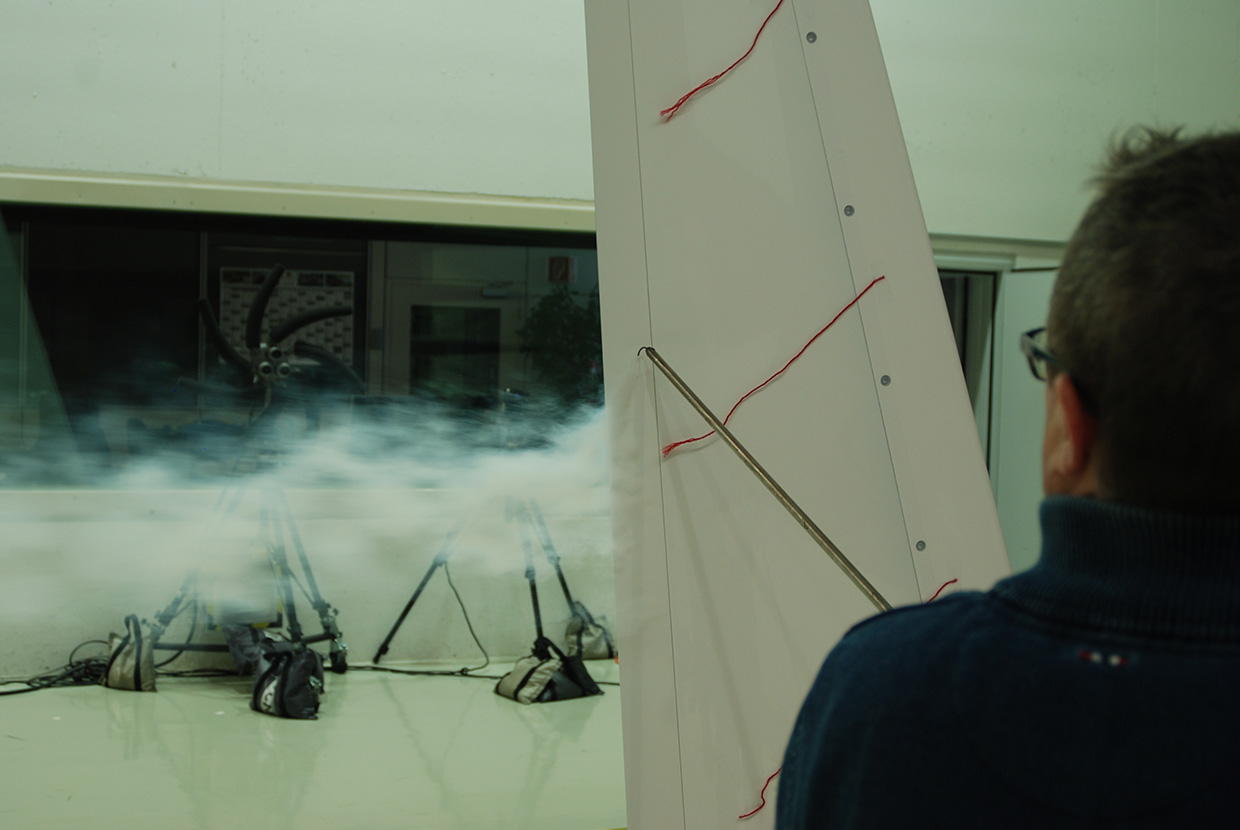Silent wings on short distance flights



The sky above our heads is increasingly filled with planes flying us to our next holiday or business destination. The number of take-offs and landings is constantly growing, particularly the number of regional flights. During take-off, the aircraft engines produce noise at full thrust, and precisely planned take-off paths are supposed to reduce the exposure of the population to flight noise. When approaching for landing, the aircrafts arrive with throttled engines and the noise is dominated by the air flow at the wings and landing gears.
The design and aerodynamics of a wing have a major impact on its acoustic performance, especially during landing when the flaps are extended. This is due to the gaps between the wing and the flaps which produce air vortices generating a strong noise. So why not designing landing flaps without gaps to avoid noise emission? This topic was investigated within the frame of the EU project “Clean Sky”: a new wing with a lowerable leading edge, a “drooped nose”, was developed without a gap. The calculations on aerodynamics (CFD Computational Fluid Dynamics) and sound radiation (CAA Computational Aeroacoustics) were carried out at the Fraunhofer IBP. They have made evident that high lift values can be achieved and the noise generation is significantly lower.
An experiment was carried out to confirm the efficiency of this innovation. For this purpose, the new wing was reproduced on a scale of 1:6 and examined in different configurations in the wind tunnel. The wing was vertically mounted with an adapter on the force transmission points of the balance adaptable in length and width. The balance is situated underneath a turntable allowing to align the wing at different angles to the wind so that the forces occurring could be measured. In this way, the lift and drag coefficients for the cruise flight (all flaps retracted) and for the landing approach could be determined. An acoustic camera was used to record the noise and positions of the sound sources on the wing. The camera recordings confirmed the expected significantly reduced noise generation: In the area of the leading edge of the wing, there were only marginal differences between retracted and extended landing flap, which thus presents an important step forward in developing an innovative silent wing.